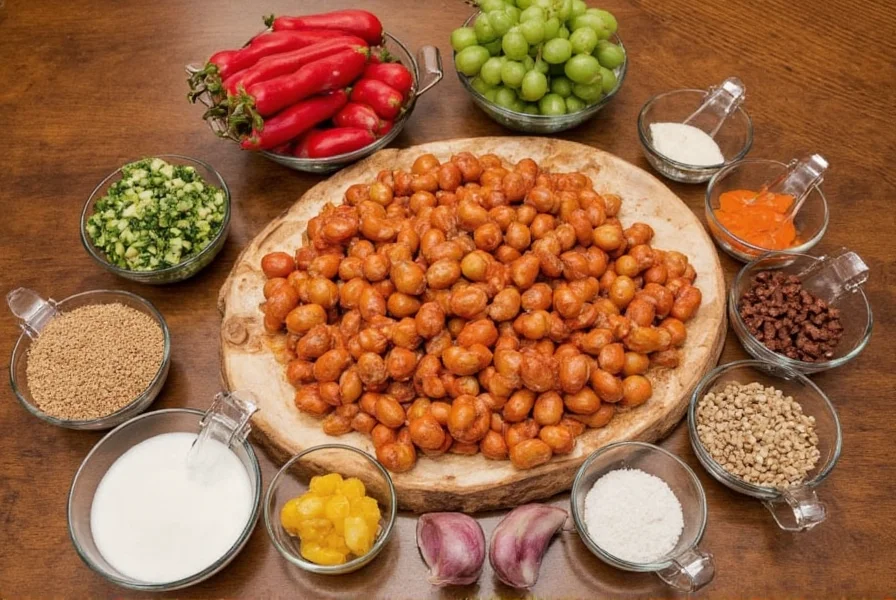The essential ingredients in a traditional Low Country Boil include shrimp, smoked sausage (typically Andouille), corn on the cob, red potatoes, onions, garlic, and a crab boil seasoning like Old Bay. These core components create the authentic flavor profile of this classic Southern coastal dish.
Originating from the coastal regions of South Carolina and Georgia, the Low Country Boil—also known as a Frogmore Stew—is a one-pot feast that celebrates the bounty of the Atlantic coastline. This communal meal brings people together around a single pot, embodying the spirit of Southern hospitality and coastal living. Understanding the proper ingredients ensures you capture the authentic taste that has made this dish a regional staple for generations.
Core Components of an Authentic Low Country Boil
While variations exist across the Southeast, certain ingredients remain non-negotiable for an authentic experience. The magic happens when these elements simmer together, allowing flavors to meld in the seasoned broth. Let's examine each essential component and why it matters.
Shellfish Selection: The Star of the Show
Shrimp takes center stage in most Low Country Boils, typically added during the final minutes of cooking to prevent overcooking. Traditional preparations use medium to large shrimp with shells on, as the shells contribute essential flavor to the broth. Many coastal families also include:
- Blue crab or stone crab claws
- Crawfish (more common in Louisiana variations)
- Clams or mussels (in some coastal adaptations)
When selecting shellfish for your low country boil ingredients list, freshness proves critical. Locally sourced seafood whenever possible maintains authenticity and delivers superior flavor compared to frozen alternatives.
Sausage: The Flavor Foundation
Andouille sausage provides the smoky, spicy backbone that defines a proper Low Country Boil. This coarse-ground pork sausage, originating from French and German settlers in Louisiana, contains garlic and pepper that infuse the entire dish. As the sausage simmers, its fat renders into the broth, carrying flavors throughout the pot.
| Sausage Type | Flavor Profile | Authenticity Level |
|---|---|---|
| Andouille | Smoky, spicy, garlicky | ★★★★★ |
| Smoked sausage | Mild smoke, less spicy | ★★★★☆ |
| Chorizo | Spicy, paprika-forward | ★★★☆☆ |
| Kielbasa | Mild, garlicky | ★★☆☆☆ |
Vegetable Essentials: Corn and Potatoes
Sweet corn on the cob and waxy red potatoes form the hearty base that absorbs the seasoned broth. The corn's natural sweetness balances the spice, while the potatoes provide substance that makes this a complete meal. Traditional preparations use:
- Corn: Fresh ears cut into thirds
- Potatoes: Small red potatoes left whole or halved
These vegetables go into the pot early enough to cook through but not so early that they become mushy. Their starch helps thicken the broth slightly, creating a more substantial cooking liquid.
Seasoning Blend: The Secret Weapon
No discussion of low country boil traditional ingredients would be complete without addressing the seasoning. While Old Bay remains popular outside the region, coastal Southerners often use:
- Zatarain's Crawfish, Shrimp & Crab Boil
- Local blends with higher cayenne content
- Homemade mixes featuring mustard seed, coriander, and allspice
The seasoning goes directly into the boiling water, creating a flavorful broth that permeates every ingredient. Many families add additional elements like:
- Lemon slices
- Garlic cloves
- Bay leaves
- Whole peppercorns
Regional Variations and Optional Additions
While purists might argue against deviations, many families incorporate regional touches that reflect their heritage or local availability. Understanding these variations helps you appreciate the flexibility within tradition.
Coastal Adaptations Across the South
From Charleston to New Orleans, slight differences emerge in what constitutes proper low country boil ingredients:
- South Carolina Lowcountry: Heavy on shrimp, minimal sausage, often includes whole blue crab
- Georgia Coast: More sausage, sometimes adds smoked ham hocks
- Louisiana versions: Crawfish replaces shrimp, more cayenne pepper

Common Ingredient Substitutions
When preparing a low country boil at home, ingredient substitutions often become necessary. While maintaining authenticity should be the goal, these alternatives work when traditional items aren't available:
- For Andouille: Kielbasa with added cayenne pepper
- For fresh shrimp: High-quality frozen shrimp, thawed properly
- For red potatoes: Yukon Gold potatoes (avoid russets)
Avoiding Common Ingredient Mistakes
Even experienced cooks make errors when gathering low country boil essential ingredients. Watch for these pitfalls:
- Over-seasoning: Many commercial crab boils contain significant salt—taste before adding extra
- Underestimating quantities: Ingredients shrink during cooking; plan for generous portions
- Mis-timed additions: Delicate items like shrimp should go in last to prevent rubberiness
Remember that the beauty of this dish lies in its simplicity and flexibility. While certain ingredients define authenticity, the most important element is gathering around the pot with good company—a tradition that transcends any single recipe.











 浙公网安备
33010002000092号
浙公网安备
33010002000092号 浙B2-20120091-4
浙B2-20120091-4